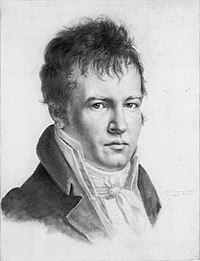প্রাকৃতিক ভূগোল
প্রাকৃতিক ভূগোল (ভূমিবিদ্যা বা ভূপদ্ধতি নামেও পরিচিত) হচ্ছে ভূগোলের প্রধান দুটি শাখার একটি।[১] প্রাকৃতিক ভূগোল প্রাকৃতিক বিজ্ঞানের সেই শাখা যেটি প্রাকৃতিক পরিবেশের মূল অংশগুলো, যেমন: বায়ুমণ্ডল, বারিমণ্ডল, জীবমণ্ডল, ভূমণ্ডলের গঠন ও প্রকৃতি নিয়ে আলোচনা করে।

ভাগসমূহ
প্রাকৃতিক ভূগোল আরও কতগুলো উপবিভাগে বিভক্ত হয়ে থাকে; এগুলো হলো:
- ভূমিরূপবিদ্যা - ভূমিরূপবিদ্যা হলো বর্তমানে এবং অতীতে উভয়ে ক্ষেত্রেই পৃথিবীর উপরিভাগ এবং তা কীভাবে গঠিত হলো সেই প্রক্রিয়াটি সম্পর্কিত চর্চা। ক্ষেত্র হিসাবে ভূমিরূপবিদ্যার বেশ কয়েকটি উপ-ক্ষেত্র রয়েছে যা বিভিন্ন পরিবেশের নির্দিষ্ট ভূগঠন নিয়ে কাজ করে, যেমনঃ মরুভূমির ভূমিরূপবিদ্যা এবং পাললিক ভূমিরূপবিদ্যা; এই উপ-ক্ষেত্রগুলি মূল প্রক্রিয়াগুলির দ্বারা একত্রিত হয়, যা প্রধানত প্লেট সঞ্চরণ বা জলবায়ু প্রক্রিয়াগুলির কারণে সংগঠন করে। ভূমিরূপবিদ্যা ভূগঠন ইতিহাস এবং গতিবিদ্যা বোঝার চেষ্টা করে এবং ক্ষেত্র পর্যবেক্ষণ, সরাসরি পরীক্ষণ এবং সংখ্যাসূচক মডেলিংয়ের (জিওমোরফোমেট্রি) সংমিশ্রনে ভবিষ্যত পরিবর্তনের পূর্বাভাস দেয়। ভূমিরূপবিদ্যা প্রাথমিক অধ্যয়নগুলি মৃত্তিকা বিজ্ঞানের দুটি প্রধান শাখার অন্যতম পেডোলজির ভিত্তি।
প্রখ্যাত প্রাকৃতিক ভূগোলবিদ

- এরাতোস্থেনেস (২৭৬ - ১৯৪ খ্রিস্ট পূর্ব) who invented the discipline of geography.[২] He made the first known reliable estimation of the Earth's size.[৩] He is considered the father of mathematical geography and geodesy.[৩][৪]
- টলেমি (আনু. ৯০ - আনু. ১৬৮ খ্রিস্টাব্দ), who compiled Greek and Roman knowledge to produce the book Geographia.
- আবু রায়হান আল বিরুনি (৯৭৩ - ১০৪৮ খ্রিস্টাব্দ), considered the father of geodesy.[৫][৬][যাচাই প্রয়োজন]
- ইবনে সিনা (৯৮০ - ১০৩৭ খ্রিস্টাব্দ), who formulated the law of superposition and concept of uniformitarianism in The Book of Healing.[তথ্যসূত্র প্রয়োজন]
- আল-ইদ্রিসি (১১০০ - আনু. ১১৬৫ খ্রিস্টাব্দ), who drew the Tabula Rogeriana, the most accurate world map in pre-modern times.[৭]
- Piri Reis (1465 – c. 1554), whose Piri Reis map is the oldest surviving world map to include the Americas and possibly Antarctica
- Gerardus Mercator (1512–1594), an innovative cartographer and originator of the Mercator projection.
- Bernhardus Varenius (1622–1650), Wrote his important work "General Geography" (1650), first overview of the geography, the foundation of modern geography.
- Mikhail Lomonosov (1711–1765), father of Russian geography and founded the study of glaciology.
- Alexander von Humboldt (1769–1859), considered the father of modern geography. Published Kosmos and founded the study of biogeography.
- Arnold Henry Guyot (1807–1884), who noted the structure of glaciers and advanced the understanding of glacial motion, especially in fast ice flow.
- Louis Agassiz (1807–1873), the author of a glacial theory which disputed the notion of a steady-cooling Earth.
- Alfred Russel Wallace (1823–1913), founder of modern biogeography and the Wallace line.
- Vasily Dokuchaev (1840–1903), patriarch of Russian geography and founder of pedology.
- Wladimir Peter Köppen (1846–1940), developer of most important climate classification and founder of Paleoclimatology.
- William Morris Davis (1850–1934), father of American geography, founder of Geomorphology and developer of the geographical cycle theory.
- Walther Penck (1888–1923), proponent of the cycle of erosion and the simultaneous occurrence of uplift and denudation.
- Sir Ernest Shackleton (1874–1922), Antarctic explorer during the Heroic Age of Antarctic Exploration.
- Robert E. Horton (1875–1945), founder of modern hydrology and concepts such as infiltration capacity and overland flow.
- J Harlen Bretz (1882–1981), pioneer of research into the shaping of landscapes by catastrophic floods, most notably the Bretz (Missoula) floods.
- Luis García Sáinz (1894–1965), pioneer of physical geography in Spain.
- Willi Dansgaard (1922–2011), palaeoclimatologist and quaternary scientist, instrumental in the use of oxygen-isotope dating and co-identifier of Dansgaard-Oeschger events.
- Hans Oeschger (1927–1998), palaeoclimatologist and pioneer in ice core research, co-identifier of Dansgaard-Orschger events.
- Richard Chorley (1927–2002), a key contributor to the quantitative revolution and the use of systems theory in geography.
- Sir Nicholas Shackleton (1937–2006), who demonstrated that oscillations in climate over the past few million years could be correlated with variations in the orbital and positional relationship between the Earth and the Sun.
- Stefan Rahmstorf (born 1960), professor of abrupt climate changes and author on theories of thermohaline dynamics.
আরও দেখুন
- বাস্তবিদ্যা
- পরিবেশ বিজ্ঞান
- পরিবেশ পাঠ
- মানবীয় ভূগোল
- ভূপরিসংখ্যান
- বিচূর্ণীভবন
- পৃথিবীর প্রাকৃতিক অঞ্চল
তথ্যসূত্র
অধিক পঠন
- Holden, Joseph. (২০০৪)। Introduction to Physical Geography and the Environment। Prentice-Hall, London।
- Inkpen, Robert. (২০০৪)। Science, Philosophy and Physical Geography। Routledge, London।
- Pidwirny, Michael. (2014). Glossary of Terms for Physical Geography. Planet Earth Publishing, Kelowna, Canada. আইএসবিএন ৯৭৮০৯৮৭৭০২৯০৬. Available on Google Play.
- Pidwirny, Michael. (2014). Understanding Physical Geography. Planet Earth Publishing, Kelowna, Canada. আইএসবিএন ৯৭৮০৯৮৭৭০২৯৪৪. Available on Google Play.
- Reynolds, Stephen J. et al. (2015). Exploring Physical Geography. [A Visual Textbook, Featuring more than 2500 Photographies & Illustrations]. McGraw-Hill Education, New York. আইএসবিএন ৯৭৮-০-০৭-৮০৯৫১৬-০
- Smithson, Peter; ও অন্যান্য (২০০২)। Fundamentals of the Physical Environment। Routledge, London।
- Strahler, Alan; Strahler Arthur. (২০০৬)। Introducing Physical Geography। Wiley,New York।
- Summerfield, M. (১৯৯১)। Global Geomorphology। Longman, London।
- Wainwright, John; Mulligan, M. (২০০৩)। Environmental Modelling: Finding Simplicity in Complexity। John Wiley and Sons Ltd, London।
বহি:সংযোগ
- Physiography by T.X. Huxley, 1878, full text, physical geography of the Thames River Basin
- Fundamentals of Physical Geography, 2nd Edition, by M. Pidwirny, 2006, full text
- Physical Geography for Students and Teachers, UK National Grid For Learning
🔥 Top keywords: রাম নবমীমুজিবনগর দিবসপ্রধান পাতামুজিবনগর সরকারবিশেষ:অনুসন্ধানইন্ডিয়ান প্রিমিয়ার লিগএক্স এক্স এক্স এক্স (অ্যালবাম)বাংলাদেশবাংলা ভাষামিয়া খলিফারাজকুমার (২০২৪-এর চলচ্চিত্র)আনন্দবাজার পত্রিকাআবহাওয়ারামপহেলা বৈশাখউয়েফা চ্যাম্পিয়নস লিগইসরায়েলইরানরবীন্দ্রনাথ ঠাকুরমুজিবনগরইন্না লিল্লাহি ওয়া ইন্না ইলাইহি রাজিউনরিয়াল মাদ্রিদ ফুটবল ক্লাব২০২৪ ইন্ডিয়ান প্রিমিয়ার লিগক্লিওপেট্রাচর্যাপদভূমি পরিমাপশেখ মুজিবুর রহমানজনি সিন্সকাজী নজরুল ইসলামঈদুল আযহাফিলিস্তিনইউটিউবভারতবিকাশআসসালামু আলাইকুমসৌদি আরবচবাংলা প্রবাদ-প্রবচনের তালিকামুহাম্মাদ